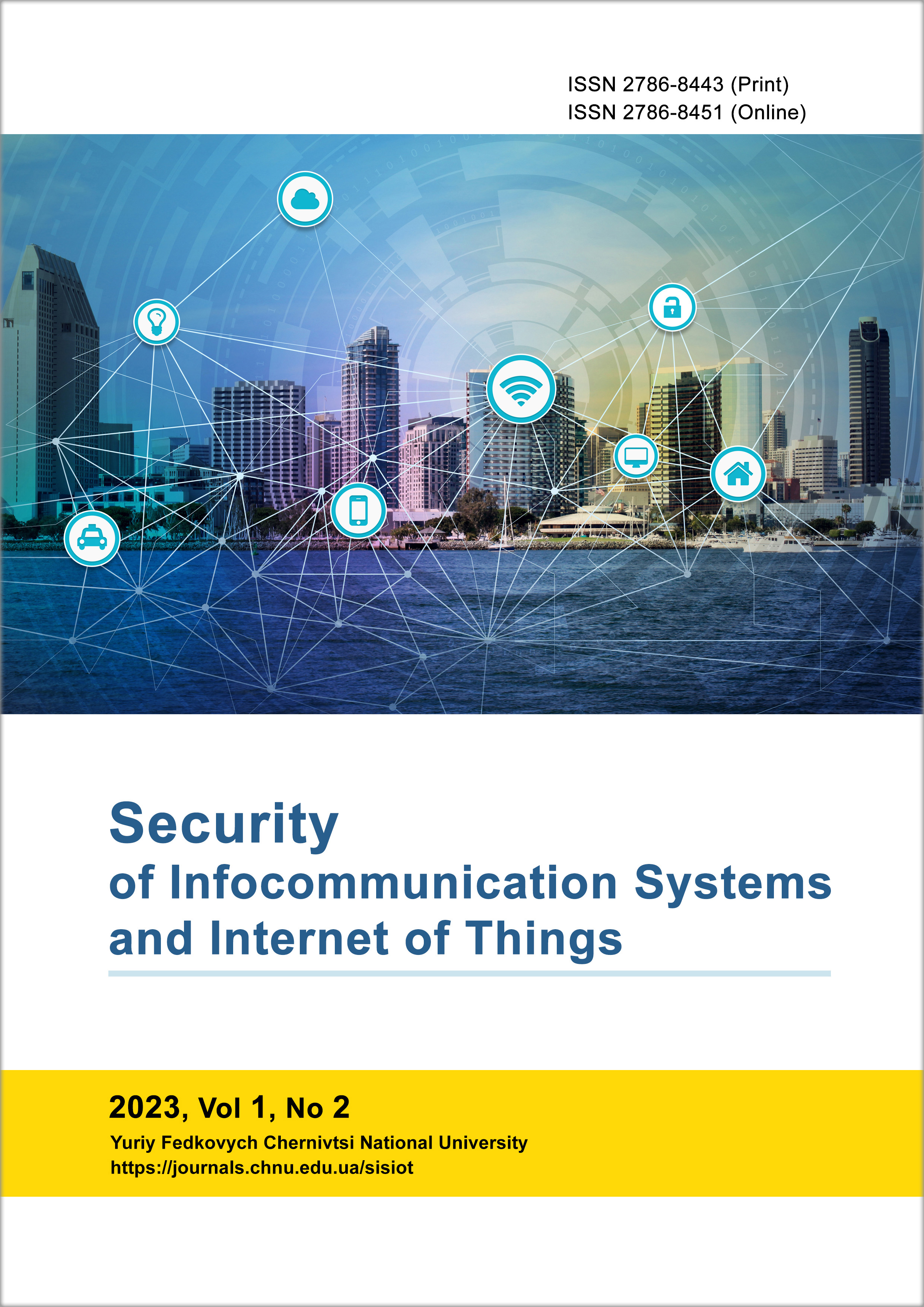Model of Hydroacoustic Signal Synthesis Using Neural Networks
DOI:
https://doi.org/10.31861/sisiot2023.2.02007Keywords:
hydroacoustics, Dirac function, Fourier transform, machine learningAbstract
Underwater acoustics (also called hydroacoustics), which is associated with the study of the patterns of propagation of sound waves in water, is a driving force in the research and development of systems of hydroacoustic technologies and means of communication, monitoring and detection of surface and underwater objects of biological or artificial origin, study of marine resources and environments, noise measurement, etc. This kind of research requires the analysis of huge amounts of data, revealing non-obvious patterns and creating models for the mathematical description of physical phenomena, such as sound propagation in a medium with random characteristics and radiation from different sources, as well as radiation from sources with different apertures or sound scattering, etc. That is why, in order to create the latest technologies in this area, it is necessary to solve complex specialized problems of a fundamental and applied nature using machine learning algorithms and artificial intelligence. Neural networks are nonlinear systems that allow you to effectively classify data compared to mathematical and statistical methods, which are currently quite widely used. In this paper, the authors propose to use a pre-trained neural network for the analysis and classification of hydroacoustic signals. This procedure for distinguishing acoustic signals has a number of advantages, in particular, individual objects are divided into groups based on information about one or more characteristics inherent in these objects, and on the basis of a training sample of pre-labeled objects. Thus, the proposed model of signal synthesis using neural networks is characterized by increased informativeness of the characteristics of the propagation of hydroacoustic signals, which will have prospects in further practical implementation.
Downloads
References
J.M. Bell, L.M. Linnett (1997). Simulation and analysis of synthetic sidescan sonar images. IEE Proceedings on Radar, Sonar and Navigation.
O. V. Svynchuk, A. M. Yevtushenko, G. S. Pukha, and T. V. Pirogovska. Information and Analytical Data Processing Systems.
Douglas S. Drumheller, Sandia National Laboratories, New Mexico, Introduction to Wave Propagation in Nonlinear Fluids and Solids, 1998, 536 pages.
Salamon, R. Hydrolocation Systems; Gda´nskie Towarzystwo Naukowe: Gda´nsk, Poland, 2006. (In Polish)
Agnieszka Czapiewska, Andrzej Luksza, Ryszard Studanski and Andrzej Zak, Article Reduction of the Multipath Propagation Effect in a Hydroacoustic Channel Using Filtration in Cepstrum.
Mazurek, R.; Lasota, H. Application of maximum-length sequences to impulse response measurement of hydroacoustic communications systems. Hydroacoustics 2007, 10, 123–130.
Studanski, R.; Zak, A. Results of impulse response measurements in real conditions. J. Mar. Eng. Technol. 2017, 16, 337–343.
Zielinski, T.P. Digital Signal Processing; WKŁ:Warsaw, Poland, 2007. (In Polish)
Graupe D. Principles of Artificial Neural Networks: Basic Designs to Deep Learning (4th Edition) (Advanced Circuits and Systems) / D. Graupe. – Singapore: WSPC, 2019. – 438p.
Ping D. The Machine Learning Solutions Architect Handbook: Create machine learning platforms to run solutions in an enterprise setting / D. Ping. – Birmingham : Packt Publishing, 2022. – 442 p.
Baochun Qiu, Maofa Wang, Houwei Li, Li Ma, Xiuquan Li, Zefei Zhu, Fan Zhou, Development of hybrid neural network and current forecasting model based dead reckoning method for accurate prediction of underwater glider position, Ocean Engineering, Volume 285, Part 2, 2023.
Bartosz Czaplewski, Mariusz Dzwonkowski, A novel approach exploiting properties of convolutional neural networks for vessel movement anomaly detection and classification, ISA Transactions, Volume 119, 2022.
Published
Issue
Section
License
Copyright (c) 2023 Security of Infocommunication Systems and Internet of Things

This work is licensed under a Creative Commons Attribution 4.0 International License.









